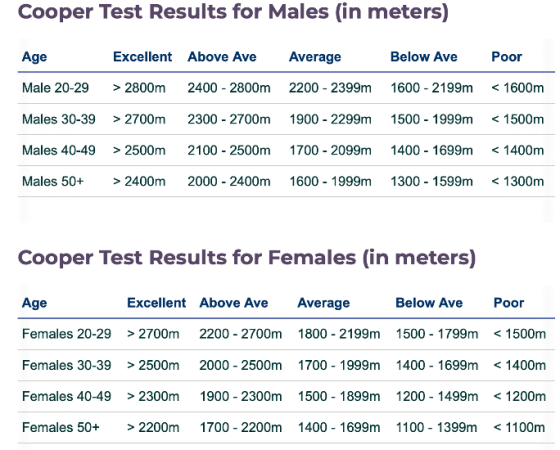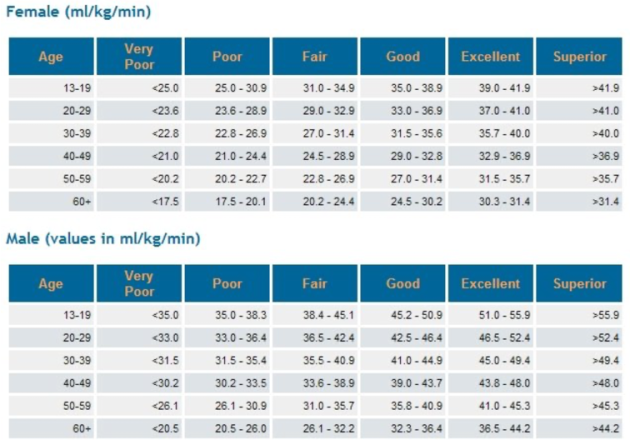
Fit for Duty: Measuring cardiovascular fitness
Sherry Dean
Features Uncategorized Training Week firefighter training Photo credit: Adobe Stock/only_kim
Photo credit: Adobe Stock/only_kim You have only had to pull a charged hoseline through a house or climb a few flights of stairs in full gear once to understand that cardiovascular fitness is important to fire fighting. Strength is also important, but let’s consider cardiovascular fitness for today. Cardiovascular fitness (CVF) can be measured in a variety of ways and having a comprehensive understanding of it may or may not be important from an academic perspective, but whether you define it or not it will affect your ability to effectively respond.
VO₂ max is used to measure cardiovascular fitness and is conducted in a medical facility with specialty equipment. It measures the maximum rate of oxygen you are able to use during exercise. VO₂ max = Q x (CaO2 – CvO2) but what does that mean? More simply it is the maximum millilitres of oxygen consumed in one minute / body weight in kilograms. How can you effectively measure it? The good news is there are plenty of options available if it is something you want to measure. If you don’t read any further, one of the best ways to measure your CVF is by perceived exertion. If you were able to run a five kilometres in 25 minutes or less and you are at 30 minutes or a walk-run, your VO₂ max has declined. Too many firefighters die each year from cardiovascular emergencies. Maintaining this fitness is crucial for your health.
Entry levels in fire departments should require some sort of fitness assessment career and volunteer. Many fire departments do not have testing and others have no VO₂ max equivalent. Let’s face it, the demands of fire department training have increased and finding people to join is a challenge in many communities. I have strong personal feelings about the safety of people performing fire fighting duties and the requirement of being fit for duty. Departments can adjust the types of response or levels of response by individuals to attempt to protect their members, but firefighters have died at fill stations due to cardiac emergencies. Entry level testing and programs within your department to improve/maintain fitness are crucial to ensuring departments are doing what they should to protect members.
Your VO₂ max is affected by age, gender and current fitness. Consider that fires don’t care what your gender, age or fitness level is. The work being performed on the fire ground will require some firefighters have to work harder to achieve the same goals. Each of the submaximal (not official) VO₂ max tests listed below have a scale from poor to exceptional. At a minimum, any person on a fire ground in active response should have a ‘good’ VO₂ max. If you’re are not currently hitting a ‘good’ level, continuing to train will improve your fitness and VO₂ max. It isn’t necessary to measure a VO₂ max, but it can be a humble reminder or reward in maintaining fitness. If you are planning on applying for a fire fighting career having a ‘very good’ level of CVF is necessary to your success.
Submaximal VO₂ max tests
All of the following tests require a warm-up prior to starting and a cool down at the end. As with any fitness regime you must be considered free of risk by a health professional. If you are feeling unwell at any point during your testing you should not continue. No matter where your VO₂ max results land, improving your result is a simple as working at it. Improving your VO₂ max will improve your ability to fight fires, but it will also increase your life span, improve your quality of life and reduce your risk of cardiovascular disease.
12 minute 1.5m/2.4km run (Cooper Run)
This is a simple test with minimal equipment. It requires a flat surface to run on, (either a measured track or a fitness app that will measure distance) and a timer. You will then run for 12 minutes and measure the distance you covered. Using the tables below you can rate your performance.

Balke and Ware Treadmill Test
The Balke and Ware test requires a treadmill, timer and heart rate monitor. The testing is performed until the participant reaches 85 per cent of their maximum heart rate. Your 85 per cent can be calculated using the following equation [(208 – (0.7 x Age) x 85 per cent]. The test is measured differently for males and females
Males: The treadmill is set to a speed of 3.3km on zero per cent incline. After one minute, the grade is raised to a two per cent incline and increased by one per cent each minute. The results for VO₂ max are measured as follows VO2 max = 1.444 × Time + 14.99 (example, Male 29 years old completes test in 15 minutes – 1.44 x 20 + 14.99 = 43.79 Good)
Females: The treadmill speed is set at 3.0 mph, with the gradient starting at zero per cent. After three minutes, the grade is raised to a 2.5 per cent incline and increased by 2.5 per cent every three minutes. The results for VO₂ max are measured as follows VO2 max = 1.38 × Time + 5.22 (example, female, 29 years old, completes test in 21minutes – 1.38 x 21 + 5.22 = 34.2 Good)
The test is considered complete when the heart rate reaches 85 per cent of maximum or the test cannot be continued due to signs or symptoms. Results are measured against the VO₂ max table.

Sherry Dean is a career firefighter/engineer with Halifax Regional Fire & Emergency Service. She has more than 20 years of experience in fitness and training. Contact Sherry at deansherry@bellaliant.net.
Print this page
Advertisement
- Cause of fire at Kitchener warehouse under investigation
- Bricks in a wall: Resiliency as a core skill in the modern fire service